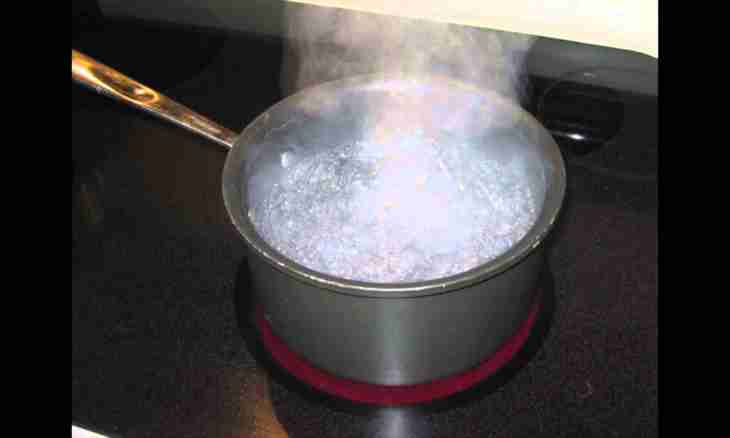Boiling of water is one of frequent daily affairs. However in mountainous areas this process has the features. In various on height above sea level points boiling of water happens at different temperatures.
As the boiling point of water depends on atmospheric pressure
The boiling water is characterized by pronounced external signs: liquid swirling, formation of small bubbles in ware and the rising steam. When heating a molecule of water receive additional energy from heat source. They become more mobile and begin to vibrate.
Eventually liquid reaches such temperature at which on walls of ware vials of steam are formed. This temperature has the name a boiling point. As soon as water begins to boil, temperature does not change until all liquid turns into gas.
The water molecules leaving in the form of steam put pressure upon the atmosphere. It is called vapor pressure. With increase in water temperature it increases, and molecules, moving quicker, overcome the intermolecular forces connecting them. Vapor pressure is resisted by other force created by air mass: atmospheric pressure. When vapor pressure reaches or exceeds surrounding pressure, overcoming it, water begins to boil.
The water boiling point also depends on its purity. Water which contains impurity (salt, sugar) will begin to boil at more high temperature, than clean.
Features of boiling of water in mountains
The air atmosphere puts pressure upon all objects on the earth. At sea level it is identical everywhere and equally 1 atm., or 760 mm Hg. This normal atmospheric pressure, and water begins to boil at a temperature of 100 wasps. Vapor pressure at such water temperature is also equal to 760 mm Hg. Than above above sea level, that air becomes more rarefied. In mountains its density and pressure decrease. Because of reduction of external pressure upon water less energy is required to break intermolecular links. It means less heat, and water will begin to boil at lower temperature. With each kilometer of height water boils at a temperature which is less initial on 3.3 wasps (or approximately minus 1 degree on each 300 meters). At the height of 3 km above sea level atmospheric pressure is about 526 mm Hg. Water will begin to boil when vapor pressure is equally atmospheric, namely 526 mm Hg. This condition is reached at a temperature of 90 wasps. At the height of 6 km pressure is less normal approximately twice, and boiling temperature — about 80 wasps.
At top of Everest which height of 8848 m, water begins to boil at a temperature about 72 wasps.
In mountains at the height of 600 m where water begins to boil at 98 OS, the understanding of process of boiling is especially relevant when cooking. Some products can be brought to readiness, having increased cooking time. However for the products demanding good thermal processing and a long time of preparation it is the best of all to use the pressure cooker.

